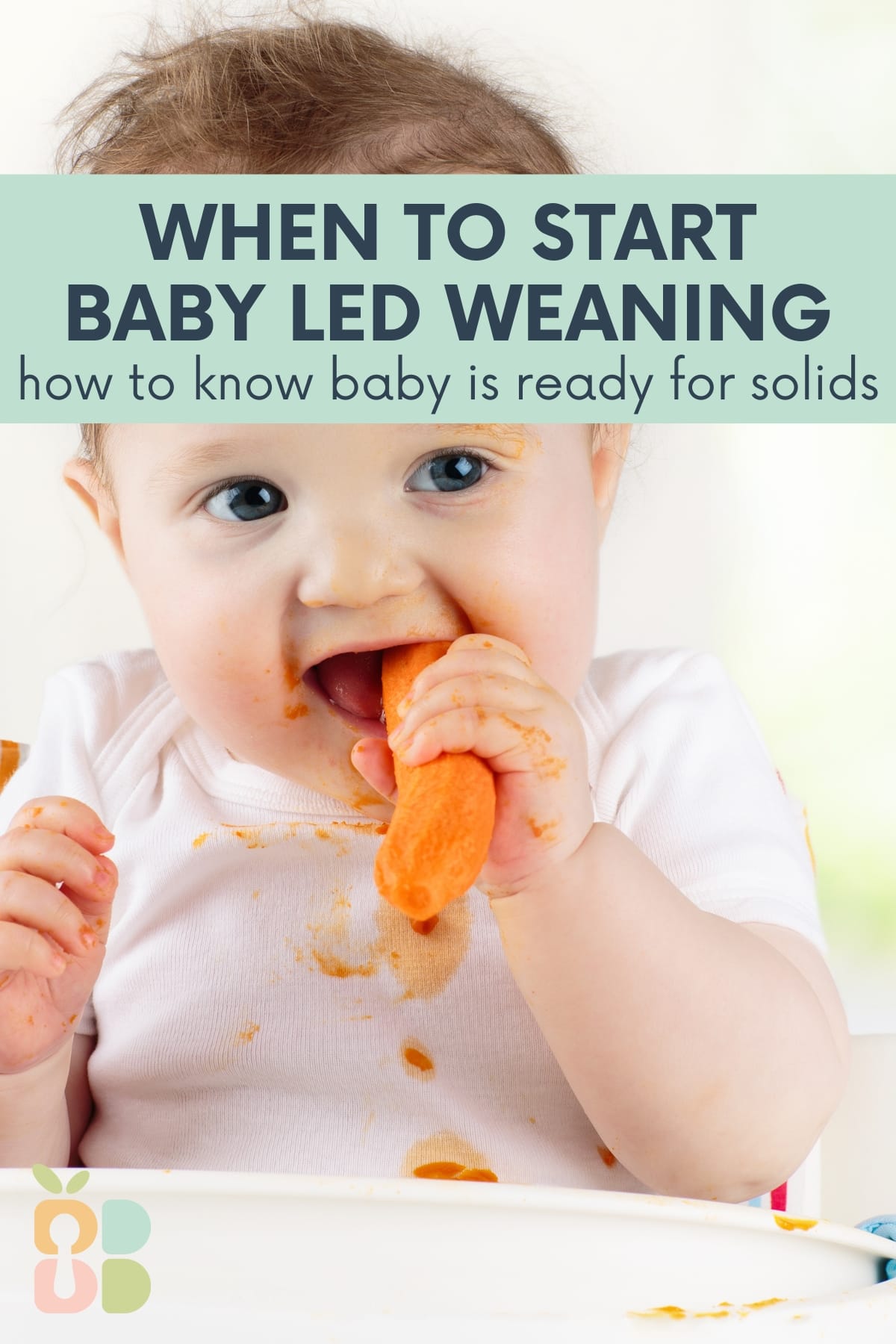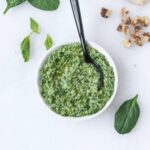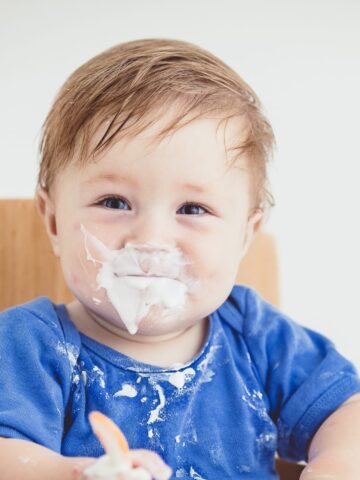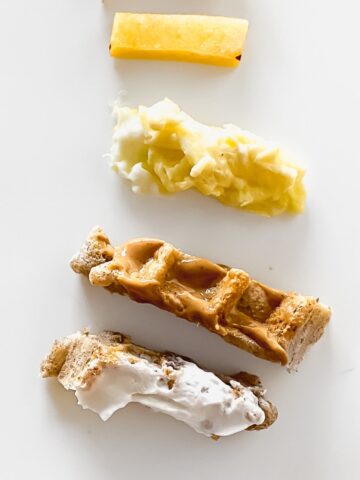Whether you're nervous or SO excited to start solids with your little one, a common question is WHEN to start baby led weaning. Here is everything you need to know about when your baby is ready to start solids.

Being a dietitian, and somebody who loves all things food and cooking, I could wait to start solids with both of my kids. I was basically jumping out of my seat with excitement the first time we put them in the high chair. If you're a new parent, you may be wondering when it's appropriate to start offering solids, especially if you're trying the baby led weaning approach. Here's what you need to know.
Special Offer: Get My Baby's First 100 Foods Tracker + Allergen Checklist!
Jump to:
What Age Should Babies Start Solids?
Babies should start solids around 6 months of age. Grandmas will often tell you to start offering rice cereal at 4 months (or even earlier!). Even among pediatricians, there is still some advice to start around 4 months. But the consensus among most health professionals is to start complementary feeding (solids) around 6 months of age. The WHO and AAP both recommend exclusive breastfeeding until 6 months. Around 6 months is when babies start to need additional nutrients from complimentary foods in addition to breastmilk or formula to meet their needs.
Before 6 months, babies' digestive systems are not quite mature enough to properly and efficiently digest solids and get all the nutrients they need, therefore exclusive milk feeds are best, nutritionally speaking. They are also not quite able to chew/manipulate food in the oral cavity before 6 months.
If you are going to be using the baby led weaning method, in addition to being around 6 month of age, babies need to be developmentally ready to start solids. This may be before or after 6 months. You will know that he is developmentally ready when baby starts to show you some signs of readiness.

Signs of Readiness
Signs of readiness that your baby is ready to start solids and can do so safely include:
- Ability to sit upright unsupported
- Can turn their head side to side
- Grabs ahold of objects/food and brings them to their mouth
- Expresses interest in food, such as reaching for food you're eating
False Signs of Readiness
These signs may not signal that your baby is ready to digest food and/or may be outdated advice. Instead of relying on these, refer to the previous paragraph for true signs of readiness. False signs:
- Waking at night
- Weight gain slowing down
- Watching parents eat
- Small baby or big baby
- Disappearance of the tongue thrust reflex - this happens naturally around 4 months
The Best Time of Day To Start
Once your baby shows you signs of readiness and can support his trunk and head without slouching, you can begin! You can start any time of day, but here are a few guidelines:
- Include baby at any meal that you are eating - breakfast , lunch, dinner or snack
- Offer food when baby isn't too tired or you risk just frustrating her
- Make sure baby isn't hungry. Being too hungry at mealtimes will likely cause frustration for baby, so make sure baby has recently had a milk feed.
- If you're offering an allergen food for the first time, avoid doing so close to nap or bedtime. (Read more about introducing allergens.)
Do I Keep Breastfeeding or Giving Bottles When Starting Solids?
Yes! At this stage, breastmilk or formula should still be given on demand, as it is still the most nutrient-dense food and the primary source of baby's nutrition needs. Introduction of complementary food is mostly for learning and exploring the process of eating right now. In addition, baby led weaning works best when you continue to offer milk as normal. That way baby can enjoy playing with and tasting food without being cranky due to hunger. As long as you let baby be in control of how much she eats, intake of solids will gradually increase as she learns, and milk will gradually decrease to fit her needs.
Before you start, be sure to review the basic safety guidelines on BLW. Then continue on to getting started!


















Leave a Reply